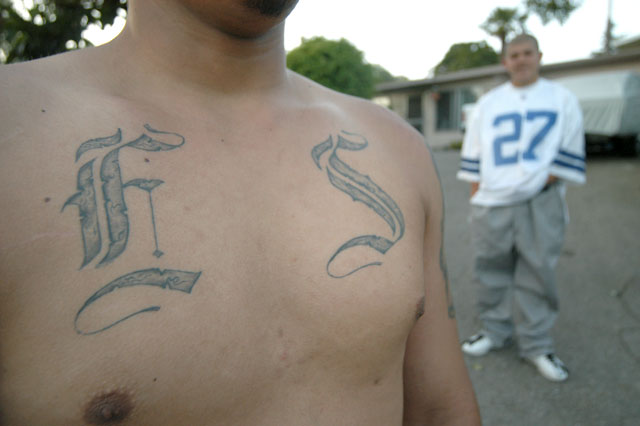Is the Past Fair Game?
Concerns About Juvenile Records of Gang Injunction Targets Bog Down Case

Confusing? Yes. Closer to trial? Definitely not.
The city’s pursuit of a gang injunction took a turn toward the complex Monday afternoon after defense counsel for several defendants — as they have in previous hearings — brought up concerns on the amount, and type, of juvenile information contained in the documents provided by the city. The attorneys are not only concerned about the juvenile information on their clients — there are 30 individual defendants named in the injunction, along with the entire Eastside and Westside gangs — but also the juvenile information of more than 100 other people named in evidence the city has provided to the defense. The lawyers say this information is protected by state law and cannot be used in the case against their clients.
The injunction would prevent gang members from associating in specific “safe” zones in the city, committing crimes in these areas, and wearing certain types of gang-affiliated clothing. Critics of the proposed injunction question whether Santa Barbara — which has seen gang crime drop in recent years — really needs a gang injunction and also say the filing unfairly targets the youth. Violent crime is the lowest it’s been in 26 years, according to police, and there were no homicides in Santa Barbara in 2011.
The City Attorney and District Attorney’s Office, using information gathered by surveillance and patrol over years, are bolstering their allegation that there are gangs in Santa Barbara that are a nuisance to the public. Much of this intel includes interactions with juveniles. Officials argue the information they are using is not protected under the Welfare and Institutions Code because its language is narrowly written to only include actual juvenile court case files. “Police officers’ observations would be covered by [the code],” Chief Assistant DA Hilary Dozer said.
But defense counsel say that judges have interpreted and extended the code’s language to protect information beyond what might be included in some dusty case file, and the code keeps confidential all brushes with the law a person might have had as a juvenile. “If they want to disclose that information,” said defense attorney Tara Haaland-Ford, “they have to follow the proper procedures.” That means that experts — in this case, Santa Barbara police officers specializing in gang crime — wouldn’t be able to talk on the witness stand or in court documents about events they saw and interactions they had with offenders who were juveniles at the time.
This information has already been passed out to defense counsel, as well as defendants representing themselves. Some defense attorneys say this could be arming potentially dangerous people with information on acts committed by members of opposing gangs. One attorney called it “totally reckless and unlawful” for the city to release the information.
In February the matter will head back to Judge Colleen Sterne, who will decide if the city can move forward with its case or instead be required to petition the juvenile court to unseal the records, a decision that could send the civil case in several different directions. Another potential solution is to issue a protective order limiting the sets of eyes that can see the files.
If the judge rules against the city, the court could order the information already distributed destroyed or returned. The city would then petition the juvenile court — on a case-by-case basis for all 100-plus juveniles named — to release the juvenile information, a process that would likely involve dozens and dozens of hearings.
But confidentiality has long been a staple of the juvenile court system. The juvenile court judge would have to rule that the price of the person’s confidentiality is outweighed by other interests in unsealing that person’s record. It could very well be the case with many of the juveniles named that they are long removed from the behavior of their younger years, and keeping the file confidential would be in that person’s best interest. “These are innocent people who have moved on,” said defense attorney Bill Makler.
That would lead to less evidence available to prove the city’s case. Multiply that by more than 100, and the city may have a big problem. If the juvenile court judge withholds a lot of the information, then the question for the city is whether it would have enough evidence — notwithstanding its setback — to still prove the case.
So there’s a lot to be settled. What is settled is that the case will not go to trial in March as it was originally scheduled.



